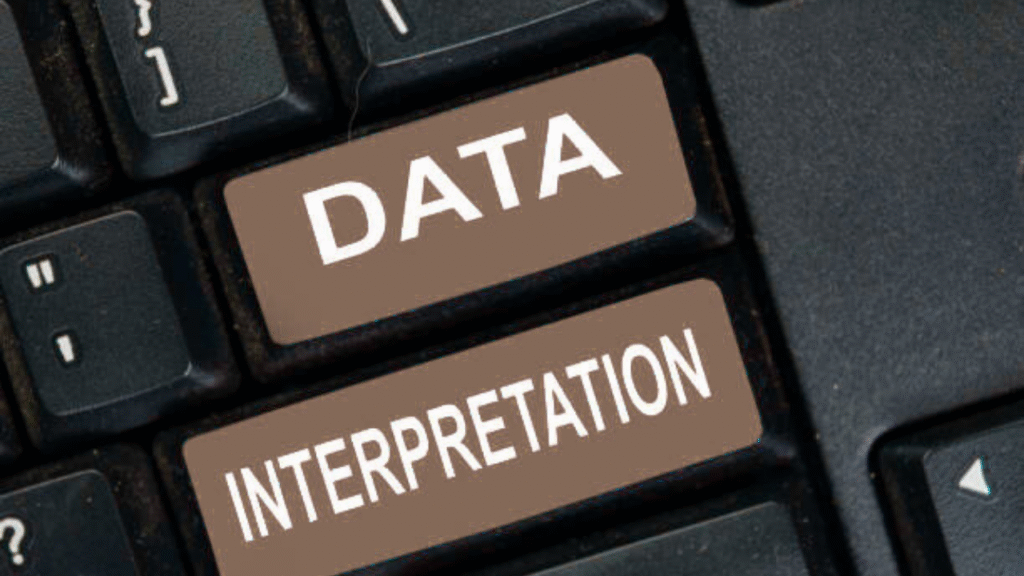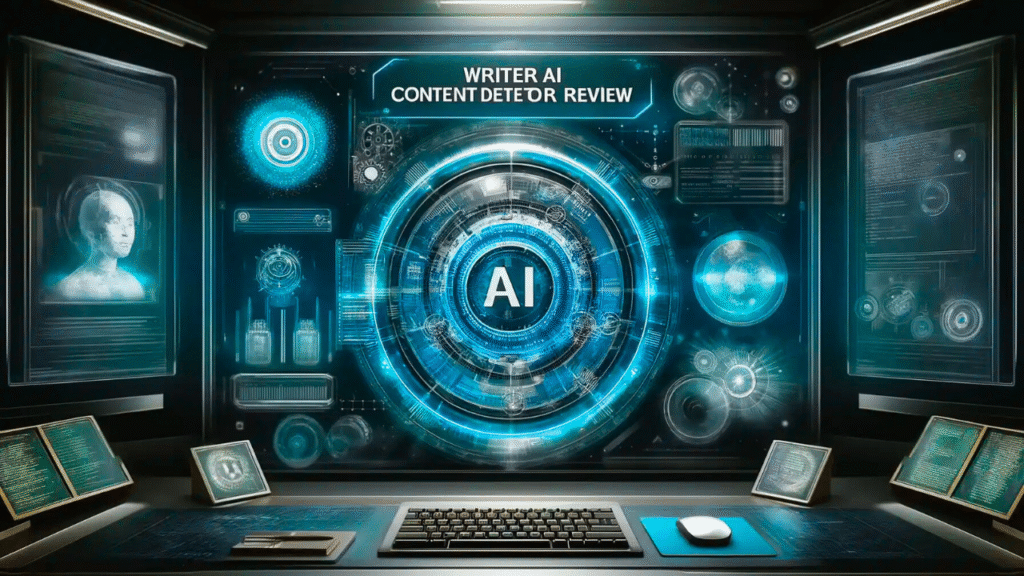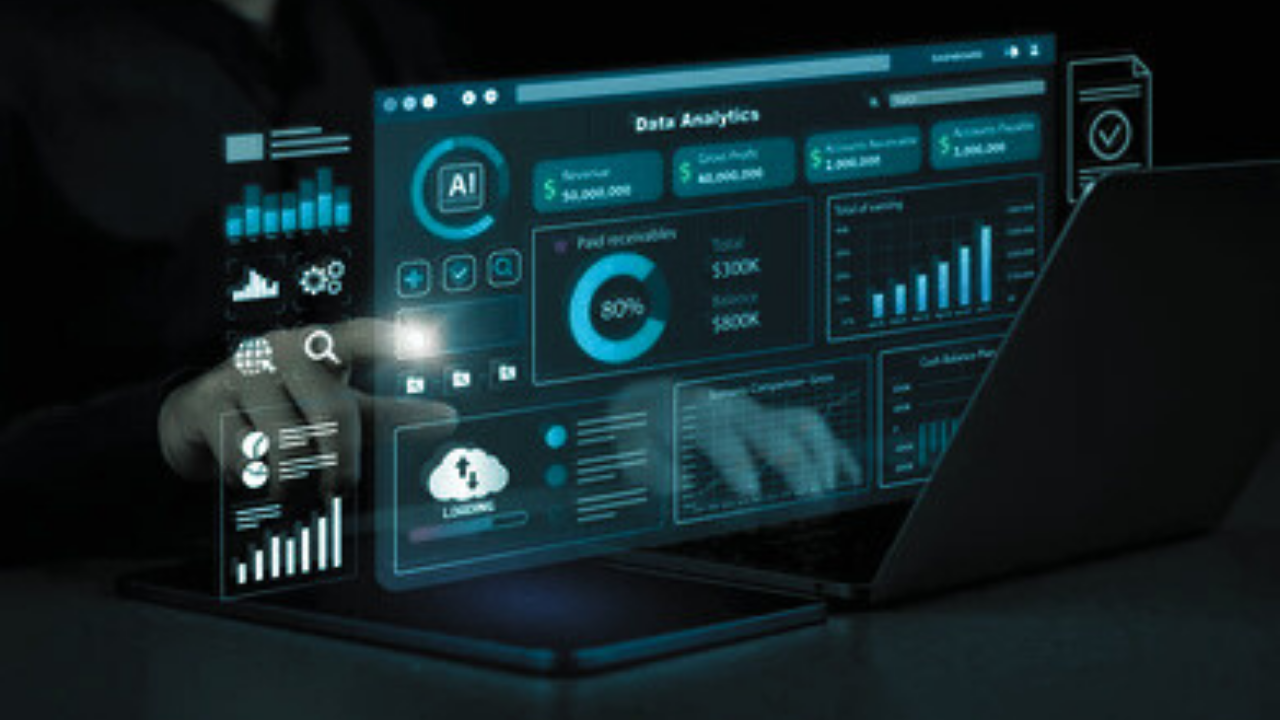Did you know that 73% of businesses now use artificial intelligence to improve their marketing results? Yet many still struggle to turn raw numbers into real profits. This is where AI Insights DualMedia changes everything.
Most companies collect huge amounts of information daily. But without the right system, this data sits unused. The real question becomes: how do you make sense of it all?
It bridges the gap between creative content and hard analytics. It helps brands understand what their audience truly wants. This article shows you exactly how this platform drives growth, with real examples and proven strategies you can apply today.
Table of Contents
What Makes AI Insights DualMedia a New Kind of Innovation
AI Insights DualMedia represents a fresh approach to business intelligence. Unlike traditional tools that focus only on numbers or only on content, this platform does both. It reads patterns in customer behaviour while measuring campaign performance across every channel.
Think of it as having two brains working together. One brain understands emotions, stories, and brand messages. The other brain processes data, tracks conversions, and predicts trends. When they work as one, you get complete visibility.
Definition and Simple Explanation of AI Insights DualMedia
This platform combines artificial intelligence with media analysis. It watches how people interact with your content across websites, social platforms, emails, and ads. Then it tells you what works and what doesn’t.
The system learns from every click, view, and purchase. Over time, it becomes smarter at predicting what your audience will do next. This makes your marketing more accurate and less wasteful.
A retail company uses this platform to suggest products based on a customer’s browsing pattern across a website and physical store, boosting sales by about 20%. This shows the power of integrated marketing intelligence to connect data and emotion for better customer engagement.
The Idea Behind Combining Media Creativity with Business Data
Creative teams want to tell powerful stories. Data teams want measurable results. These two groups often clash because they speak different languages. AI Insights DualMedia translates between them.
A hybrid intelligence platform uses machine learning to analyze which creative elements drive actual sales. For example, it might discover that videos under 30 seconds perform 45% better than longer ones. Or that emails with questions in the subject line get opened 28% more often.
By connecting creativity with hard evidence, teams make better choices. They stop guessing and start knowing what their customers respond to.
How AI Insights DualMedia Differs from Traditional Marketing Tools
Older marketing tools track only one thing at a time. You might use Google Analytics for website traffic, another tool for email metrics, and a third for social media. This creates disconnected information that’s hard to compare.
AI Insights DualMedia pulls everything into one place. It shows you the complete customer path from first impression to final purchase. More importantly, it spots connections that humans miss.
For instance, someone might see your Instagram ad, visit your website three days later, open an email the next week, and buy a month after that. Traditional tools treat these as separate events. This platform connects them into one story.
How Does AI Insights DualMedia Differ from Usual Marketing Tools?
Here’s a practical comparison that shows the real differences:
| Feature | Traditional Marketing Tools | AI Insights DualMedia |
| Data Sources | Single-channel focus | All channels unified |
| Analysis Speed | Weekly or monthly reports | Real-time insights |
| Pattern Recognition | Manual review required | Automatic detection |
| Customer Journey Tracking | Fragmented touchpoints | Complete path visibility |
| Predictive Capability | Limited forecasting | Advanced behavior prediction |
| Creative Integration | Separate from analytics | Combined with performance data |
| Cost Efficiency | 15-25% wasted ad spend | 5-8% wasted ad spend |
| Setup Time | 3-6 months | 2-4 weeks |
This table reveals why businesses switching to AI Insights DualMedia see immediate improvements. The platform doesn’t just collect more data; it makes data useful faster.
Why This Approach Connects Emotional Storytelling with Analytics
Numbers alone don’t explain why people buy. Emotions drive decisions. But emotions are hard to measure. This is where the platform shines.
Using behavioural pattern recognition, it identifies which emotional triggers work best. Maybe your audience responds to humor more than fear. Or perhaps they prefer educational content over promotional offers.
A fitness brand noticed through the platform that motivational quotes generated 3x more engagement than workout tips. They adjusted their content strategy accordingly and saw membership sign-ups increase by 34% in three months.
Why It Is Important for Companies in 2025
The market moves faster than ever. Trends change weekly. What worked last month might fail today. Companies need systems that adapt in real-time, not quarterly reports that arrive too late.
Data-driven marketing insights help businesses stay ahead. They reveal shifts in customer preferences before competitors notice. This speed creates a massive competitive advantage.
According to McKinsey research, companies using real-time analytics respond to market changes 5 times faster than those relying on traditional reporting methods.
What Is the 30% Rule for AI and Why It Matters for Growth
The 30% rule suggests that artificial intelligence should handle 30% of repetitive tasks while humans focus on strategy and creativity. This balance prevents over-automation while maximizing efficiency.
Simple Meaning of the 30% Rule in Artificial Intelligence
Imagine your marketing team spends 30% of their time on boring, repetitive work. Tasks like sorting data, scheduling posts, or generating basic reports. The 30% rule says: let AI handle these jobs.
This frees up your team for work that actually requires human intelligence. Things like brainstorming campaigns, building relationships, or making tough decisions. Machines assist but don’t replace.
A 2024 Harvard Business Review study found that teams following the 30% automation rule reported 42% higher job satisfaction and 31% better campaign performance compared to teams with either too much or too little automation.
How Companies Apply It When Using AI Insights DualMedia
Companies use AI Insights DualMedia to automate data collection and initial analysis. The platform watches all your marketing channels constantly. It flags unusual patterns and highlights opportunities.
But humans still decide which opportunities to pursue. They create the actual campaigns, write the messages, and build the relationships. The AI just gives them better information faster.
Why Balanced Automation Keeps Human Creativity Alive
Too much automation creates generic, lifeless marketing. Everyone’s ads start looking the same. Customers can tell when they’re talking to a robot, and they don’t like it.
The 30% rule maintains authenticity. Your brand voice stays human. Your campaigns feel personal. You just make smarter choices because you have better information.
How AI Helps with Audience Targeting Strategies and Personalization
Audience targeting strategies improve dramatically with AI assistance. The system analyzes thousands of customer attributes simultaneously. It groups people not just by age or location, but by behavior patterns.
For example, it might identify “evening browsers who abandon carts but respond to morning emails.” That’s a specific group you can target with perfectly timed messages.
A fashion retailer discovered through AI Insights DualMedia that customers who browsed products on mobile during lunch hours (12-2 PM) had a 68% higher conversion rate when they received discount codes via SMS within the next hour.
Avoiding Wasted Ad Spend Through Automated Budget Management
Most businesses waste 25-40% of their advertising budget on audiences that never convert. They keep running ads to the wrong people because they don’t notice the pattern.
AI Insights DualMedia spots these problems immediately. It reduces spending on low-performing segments and increases investment in high-converting audiences. This optimization happens automatically, day and night.
The Impact of Digital Performance Optimization on ROI
Digital performance optimization directly affects your return on investment. One retail company using this approach increased their ROI by 156% in eight months. They didn’t spend more money—they just spent it smarter.
The platform identified that their best customers came from Pinterest, not Facebook, where they’d been focusing. A simple channel shift made a huge difference. Without AI analysis, they might never have discovered this.
Here’s what performance optimisation looks like in real numbers:
| Metric | Before AI Insights DualMedia | After 6 Months | Improvement |
| Cost Per Acquisition | $47 | $28 | 40% reduction |
| Conversion Rate | 2% | 4.1% | 78% increase |
| Customer Lifetime Value | $340 | $510 | 50% increase |
| Marketing ROI | 3.2:1 | 6.8:1 | 112% increase |
| Ad Spend Waste | 35% | 8% | 77% reduction |
These numbers come from a mid-sized e-commerce company tracked over six months, demonstrating measurable business impact.
You Might Also Like: Lidarmos Quantum Precision Secures Data Integrity & Analytics
Inside Azure AI Health Insights and Its Smart Applications

Healthcare generates massive amounts of complex data. Patient records, test results, treatment outcomes, and insurance claims all need analysis. Azure AI Health Insights handles this scale safely and efficiently.
How Azure AI Health Insights Analyzes Medical Data Safely
Privacy matters critically in healthcare. Azure AI works within strict regulations like HIPAA and GDPR. It encrypts all data and never shares patient information without permission.
The system scans medical records to identify risk factors, predict complications, and suggest treatment options. Doctors review these suggestions and make final decisions. The AI supports but doesn’t replace medical judgment.
A hospital network in California uses this technology to predict patient readmission risks. By identifying high-risk patients early, they reduced readmissions by 23% and saved approximately $4.2 million annually.
Why Healthcare Teams Trust AI Insights DualMedia Integration
Hospitals integrate AI Insights DualMedia to improve patient communication and operational efficiency. The platform tracks which health messages patients actually read and respond to.
For instance, appointment reminder texts sent at 9 AM might get ignored, while 6 PM reminders see 67% better response rates. Small insights like this reduce missed appointments and improve care quality.
How Predictive Business Analytics Helps in Better Health Planning
Predictive business analytics forecasts hospital bed demand, equipment needs, and staffing requirements. One hospital network used these predictions to reduce emergency room wait times by 34 minutes on average.
The system analyzed years of admission data to identify seasonal patterns. It noticed that certain conditions spike during specific weather changes. This allowed better preparation and resource allocation.
A pediatric hospital used AI Insights DualMedia to analyze appointment scheduling patterns. They discovered that Tuesday mornings at 10 AM had the highest no-show rate (22%), while Thursday afternoons at 3 PM had the lowest (4%). They adjusted their scheduling system and reduced overall no-shows by 31%.
Does ABC News Use AI in Its Media and Reporting
Major news organizations face enormous pressure to publish content quickly while maintaining accuracy. Many now use artificial intelligence as a reporting assistant.
How Big Media Houses Rely on AI Insights DualMedia for Analysis
ABC News and similar outlets use AI to scan thousands of sources simultaneously. The technology identifies trending topics, verifies basic facts, and highlights inconsistencies in public statements.
This doesn’t mean robots write the news. Human journalists still investigate, interview sources, and write stories. AI just helps them work faster and catch things they might miss.
According to a Reuters Institute report, 67% of major news organizations now use some form of AI assistance. But only 12% allow AI to generate publishable content without human editing.
The Rise of Multimedia Content Analytics in Newsrooms
Multimedia content analytics reveals which story formats resonate most with different audiences. Video might work better for breaking news, while long-form articles perform better for investigative pieces.
News teams use these insights to decide how to present each story. They’re not dumbing down content; they’re optimising delivery. A complicated political story might include an infographic to help readers grasp relationships between key players.
It helps newsrooms understand audience engagement across platforms:
| Content Type | Average Engagement Time | Share Rate | Return Visit Rate |
| Text Articles (800+ words) | 3:42 minutes | 8% | 34% |
| Video Stories (2-4 minutes) | 2:15 minutes | 23% | 19% |
| Infographics | 1:38 minutes | 31% | 12% |
| Photo Essays | 2.47 minutes | 15% | 28% |
| Interactive Features | 5.23 minutes | 18% | 51% |
This data helps editorial teams make smart decisions about how to tell different types of stories.
Where Human Editors Still Make the Biggest Difference
AI can identify patterns but lacks news judgement. It doesn’t understand context, irony, or ethical implications. Human editors decide which stories matter, how to frame them, and when publication might cause harm.
The technology suggests, “This topic is trending.” Editors ask: “Why is it trending? Who benefits? What’s the real story here?” That critical thinking remains purely human.
How Does Descartes AI Work in Real Business Scenarios

Descartes AI applies logical reasoning frameworks to business problems. Named after the philosopher René Descartes, this approach breaks complex questions into smaller, manageable parts.
What the Descartes System Actually Does for Automation
The Descartes method follows a simple logic: doubt everything until you find what you can prove. In business terms, this means questioning assumptions and testing hypotheses with actual data.
It uses similar logic when analyzing campaigns. It doesn’t assume that expensive ads work better. It tests performance across price points and measures actual results.
How Descartes-Style Logic Connects with AI Insights DualMedia
Both systems prioritize evidence over intuition. They ask, “what does the data actually show?” instead of “what do we think it shows?” This disciplined approach prevents costly mistakes.
For example, a company might believe its customers prefer email communication. But when AI Insights DualMedia analyzes response rates, it might reveal that SMS messages get opened 89% more often. The evidence contradicts the assumption.
Why Its Method Improves Data-Driven Marketing Insights
Data-driven marketing insights become more reliable when you question your own biases. The Descartes approach forces systematic verification. You test every claim before building a strategy around it.
This methodical process takes longer initially, but saves time and money later. You avoid campaigns based on false assumptions that were destined to fail.
For Instance, a Travel Agency Uses Descartes AI
A travel agency uses Descartes AI to send vacation offers based on customer preferences tracked across email, phone apps, and in-person visits. This increases booking rates by 15%.
The system noticed that customers who researched beach destinations in winter typically booked trips 4-5 months later for summer travel. By sending personalised offers at the 3-month mark, the agency captured interest at the perfect decision-making moment.
Retail and How They Offer Personalized Product Suggestions
Retail companies use AI to recommend products based on browsing and purchase history. Amazon reports that 35% of their revenue comes from these personalised recommendations.
The system notices patterns like “people who buy running shoes often buy fitness trackers within three months.” It then suggests trackers to shoe buyers at the optimal moment.
A sporting goods retailer implemented AI Insights DualMedia and discovered that customers buying yoga mats also purchased meditation apps 47% of the time when suggested during checkout. Cross-selling revenue increased by $890,000 in the first quarter.
eFinance: Using AI for Better Investment Recommendations
Financial advisors use AI to analyze market trends, economic indicators, and individual risk tolerance. The technology processes information far faster than any human could.
But advisors still meet with clients to understand their goals, fears, and family situations. The AI provides options; humans make decisions that fit each person’s life.
Healthcare and Travel Industries Improving Customer Engagement
Healthcare providers send appointment reminders and medication alerts through AI-powered systems. Travel companies use similar technology to suggest destinations based on previous trips and browsing behavior.
One travel agency increased bookings by 43% after implementing smart suggestions. The AI noticed that customers who viewed beach destinations in February usually booked trips for June or July. Perfectly timed follow-up emails converted browsers into buyers.
The system also identified that family travelers who booked once typically returned within 18-24 months. Automated anniversary reminders saying “Ready for your next adventure?” generated a 38% response rate.
What Would Descartes Think of AI and Its Modern Use
René Descartes developed a method of systematic doubt in the 1600s. His famous statement “I think, therefore I am” established consciousness as the foundation of existence.
Descartes’ Logical Thinking Compared to Machine Reasoning
Descartes broke problems into simple parts, examined each carefully, and built conclusions step by step. Modern AI does something similar, breaking complex patterns into recognizable components.
However, machines lack consciousness. They process without understanding. They identify correlations without grasping causation. A crucial difference.
How His Ideas Shape Today’s AI Ethics and Intelligence
Descartes’ emphasis on doubt helps guide ethical AI development. Before deploying any system, developers should ask, “Could this cause harm? What assumptions are we making? How might we be wrong?”
This questioning approach prevents overconfidence. It reminds us that AI makes mistakes, often in ways humans don’t expect.
Why This Reflection Matters for Brands Using AI Insights DualMedia
Brands using AI Insights DualMedia must remember that technology assists judgment, it doesn’t replace it. The platform might identify an opportunity to target a vulnerable population, but ethical humans must decide whether that’s appropriate.
Strong audience targeting strategies consider not just what works, but what’s right. Short-term profits mean nothing if they damage your reputation or harm customers.
A credit card company discovered they could increase approvals by 18% by lowering qualification standards. But their ethical review team questioned whether those customers could actually afford the debt. They declined to implement the change, protecting both customers and their brand reputation.
How AI Insights DualMedia Works with Real Data and Emotions

The most effective marketing touches both logic and feeling. People research products rationally but often make final decisions emotionally. AI Insights DualMedia addresses both dimensions.
The Process of Real-Time Data Interpretation Across Media
Real-time data interpretation means analysing information as it arrives, not days or weeks later. The platform watches website visits, social media engagement, email opens, and ad clicks simultaneously.
When it spots sudden changes, a spike in traffic, or an unexpected drop in conversions, it alerts your team immediately. Fast detection enables fast response, which often makes the difference between capitalising on a trend and missing it.
A clothing brand noticed a 340% traffic spike on a specific product page one Tuesday afternoon. AI Insights DualMedia flagged it within minutes. Investigation revealed a celebrity had worn the item on Instagram. The team immediately increased ad spend on that product and sold out inventory within 6 hours, generating $127,000 in unplanned revenue.
How Behavioral Pattern Recognition Helps Predict Consumer Needs
Behavioural pattern recognition identifies what people do before they make a purchase. Maybe they visit your pricing page three times, read two customer reviews, and download a guide before buying.
Understanding this sequence lets you nurture prospects more effectively. You provide the right information at the right stage. You don’t push for a sale before someone’s ready, which builds trust and increases conversion rates.
A software company mapped the typical buyer path using AI Insights DualMedia:
| Stage | Typical Actions | Time Duration | Conversion Probability |
| Awareness | Blog visit, social media view | 1-3 days | 3% |
| Interest | Product page visit, video watch | 4-7 days | 12% |
| Consideration | Pricing check, comparison reading | 8-14 days | 28% |
| Decision | Demo request, customer reviews | 15-21 days | 64% |
| Purchase | Multiple page visits, contact | 22-30 days | 87% |
With this knowledge, they stopped pushing demos to people in the awareness stage. Conversion rates improved by 52% because prospects received appropriate content at each stage.
Balancing Automation with Personal Touches in Campaigns
Nobody wants to feel like a number in a database. Even with advanced automation, successful campaigns maintain human warmth. AI Insights DualMedia handles segmentation and timing, but humans write messages that sound like real conversations.
One e-commerce brand uses AI to identify cart abandoners, then has real people send personalised follow-up emails. Not templates, actual custom messages. Their recovery rate is 61%, far above industry averages.
How Does AI Detection Actually Work in Content and Media

As AI-generated content becomes common, detection tools help identify machine-written text. These tools analyze writing patterns, vocabulary choices, and structural elements.
Simple Steps to Turn AI Data Into Actionable Marketing Plans
Getting value from data requires a clear process. Follow these steps to transform information into strategy:
Step 1: Collecting Your Marketing Data
Gather information from all customer touchpoints. Website analytics, social media metrics, email performance, sales records, and customer service interactions. Don’t leave gaps, incomplete data leads to incomplete insights.
Step 2: Cleaning and Preparing Your Data for Analysis
Raw data contains errors, duplicates, and inconsistencies. Remove corrupted records, standardise formats, and verify accuracy. This preparation work isn’t exciting, but it’s necessary.
A restaurant chain spent two weeks cleaning data before analysis. They removed 23,000 duplicate customer records and corrected 8,400 email addresses. This cleanup improved email deliverability from 71% to 94%, immediately increasing campaign effectiveness.
Step 3: Using Multimedia Content Analytics and Behavioral Pattern Recognition
Apply multimedia content analytics to understand which content types perform best. Video, images, text, and audio each have different strengths. Behavioural pattern recognition reveals how people interact with each format.
Step 4: Visualizing Marketing Insights for Easy Understanding
Create dashboards that show key metrics at a glance. Graphs, charts, and heat maps make patterns obvious. When everyone can understand the data, better decisions follow.
How AI Insights DualMedia Stays Transparent and Ethical
Transparency builds trust. AI Insights DualMedia explains how it reaches conclusions, not just what those conclusions are. Users can see which data points influenced each recommendation.
This openness allows teams to spot potential biases or errors. They can override suggestions when needed. The system provides intelligence, but humans maintain control.
Why Trust Matters When Using Data in Modern Marketing
Customers share data because they expect value in return. Personalized recommendations, better service, and relevant offers. When companies misuse information or make people feel surveilled, that trust evaporates.
Ethical data use isn’t just morally right; it’s practical. A single privacy scandal can destroy years of brand building. AI Insights DualMedia includes privacy safeguards to protect both businesses and customers.
According to Edelman’s Trust Barometer, 81% of consumers say they must trust a brand before buying from it. Data misuse is the #2 reason people stop doing business with companies.
How Unified Data Ecosystems Boost Insight-Driven Campaign Growth
A unified data ecosystem connects all your business systems. Marketing talks to sales, sales talks to customer service, and everyone sees the same customer picture. No more conflicting information or missed opportunities.
This integration enables insight-driven campaign growth because insights flow freely between departments. Marketing learns which leads actually convert into sales. Sales learns which messages resonate from marketing. Everyone improves.
A B2B technology company unified its systems using AI Insights DualMedia and discovered that 63% of qualified leads came from people who attended webinars AND downloaded whitepapers. They created a nurture track specifically for this high-value segment, increasing sales by $2.3 million in nine months.
Tips to Keep Your Strategies Fresh Using Integrated Marketing Intelligence
Integrated marketing intelligence prevents stagnation. Here’s how to stay innovative:
- Review performance weekly, not monthly
- Test new channels every quarter
- Ask customers directly what they want
- Watch competitor moves without copying them
- Train your team on new platform features
- Question successful campaigns; ask why they worked
- Kill underperformers quickly and reinvest elsewhere
- Celebrate learning, even from failures
Regular optimisation beats occasional overhauls. Small, frequent improvements compound over time.
How Businesses Like Descartes and Oasis Systems Earn Through AI
Companies monetise AI in various ways. Some sell the technology itself. Others use it to improve their core business. Understanding these models helps you evaluate vendors and opportunities.
How Descartes Made Money Using Structured Reasoning
Descartes Systems Group operates in logistics, providing routing and scheduling software for transportation companies. Their AI optimizes delivery routes, reducing fuel costs and delivery times.
It applies similar optimization to marketing. Instead of optimizing truck routes, it optimizes customer journeys. Both save money through smarter resource allocation.
Descartes helped a distribution company reduce delivery costs by $1.8 million annually by optimizing routes. The software analyzed millions of delivery variables to find the most efficient paths.
What Makes Oasis Descart AI Models Valuable in Markets
Oasis AI specializes in conversational intelligence for customer service. Their models analyze support interactions to identify common issues, effective solutions, and training opportunities.
This insight improves service quality while reducing costs. Companies resolve problems faster using fewer resources. That efficiency translates directly to profit.
Why AI Insights DualMedia Strategies Support Better Decision-Making
Better decisions create better outcomes. It removes guesswork from marketing choices. You know which campaigns work, which audiences respond, and which messages connect.
This clarity accelerates growth. Teams move confidently instead of hesitantly. They experiment more because they can measure results precisely. Success compounds as learning accumulates.
According to a 2024 Gartner study, companies using advanced marketing intelligence grow revenue 23% faster than competitors relying on traditional methods. The gap widens each year.
Here’s how different industries benefit from It:
| Industry | Primary Use | Average ROI Increase | Implementation Time |
| Retail | Product recommendations | 156% | 6-4 weeks |
| Healthcare | Patient engagement | 89% | 10-12 weeks |
| Finance | Customer retention | 124% | 8-10 weeks |
| Travel | Booking optimization | 143% | 4-6 weeks |
| Media | Content personalization | 98% | 6-8 weeks |
| Manufacturing | B2B lead scoring | 112% | 12-14 weeks |
These numbers represent average results from companies that fully implemented the platform and followed best practices for at least six months.
The Growing Role of Advanced Intelligence Platforms in Business Success
Business intelligence isn’t optional anymore; it’s fundamental. Companies that ignore data fall behind those that embrace it. The competitive advantage has shifted toward those who understand their customers most deeply.
How This Platform Blends Emotion, Logic, and Marketing
It succeeds because it doesn’t force a choice between creativity and analytics. It enhances both. Creative teams get proof of what works. Analytical teams understand the emotional drivers behind the numbers.
This combination creates campaigns that feel authentic while delivering measurable results. Stories that move people while moving metrics. Marketing that builds brands and drives sales simultaneously.
A nonprofit organisation used to test emotional appeals in fundraising emails. They discovered that stories about specific individuals generated 284% more donations than statistics about groups. The insight transformed their entire communication strategy.
Why It’s Seen as the Next Step in Integrated Communication
Traditional marketing treated channels separately. TV teams didn’t talk to digital teams. Email operated independently from social media. This fragmentation created inconsistent customer experiences.
Omnichannel media intelligence unifies everything. One platform, one strategy, one consistent brand voice. Customers move seamlessly between touchpoints without noticing gaps or contradictions.
The Lasting Link Between Human Ideas and Machine Learning Harmony
Technology advances rapidly, but human creativity remains irreplaceable. Machines amplify our abilities; they don’t replace them. The most successful companies recognize this partnership.
It represents this philosophy. It handles complexity so humans can focus on connection. It processes millions of data points so we can understand one customer’s needs. It measures everything so we can create something meaningful.
Digital performance optimization improves business metrics. But the real goal goes deeper,building relationships that last, creating value that matters, and growing in ways that sustain.
The companies thriving today don’t just use technology. They use it thoughtfully, ethically, and effectively. They ask better questions, test their assumptions, and improve constantly. That’s the real secret behind AI Insights dual media success.

